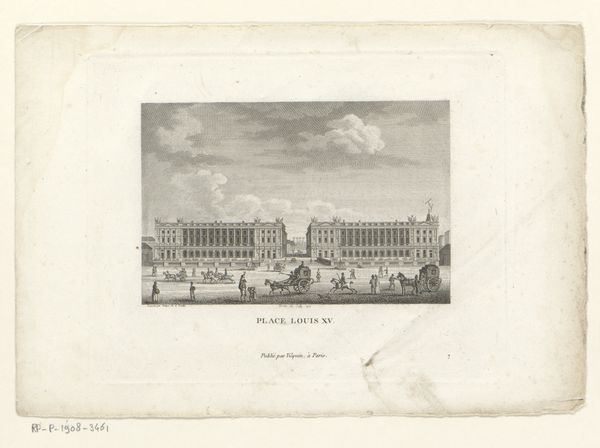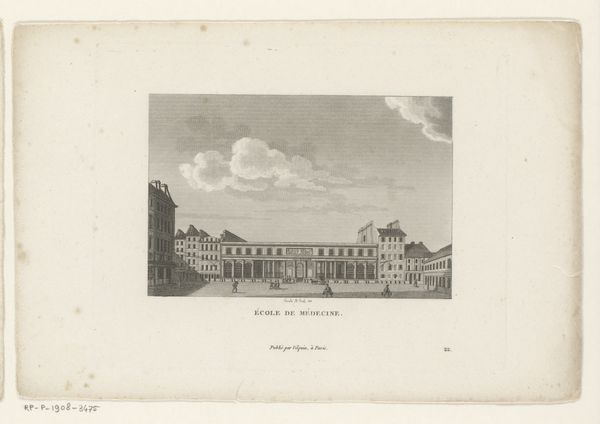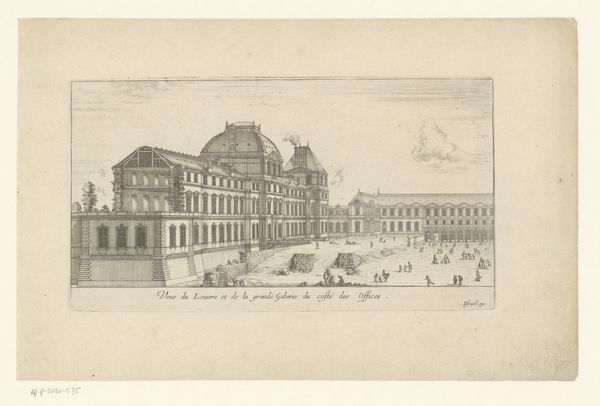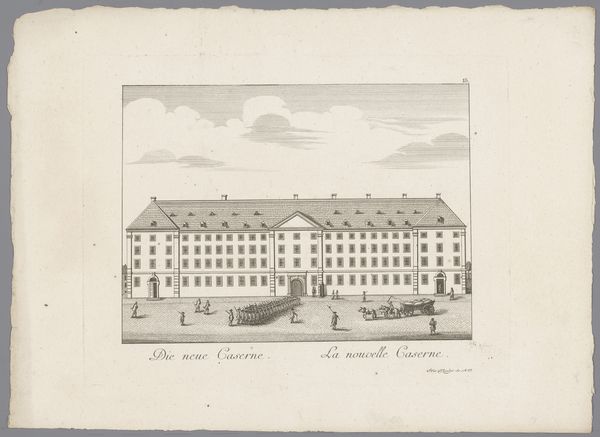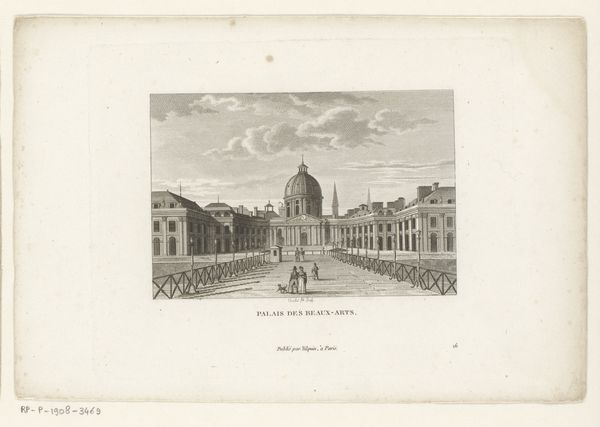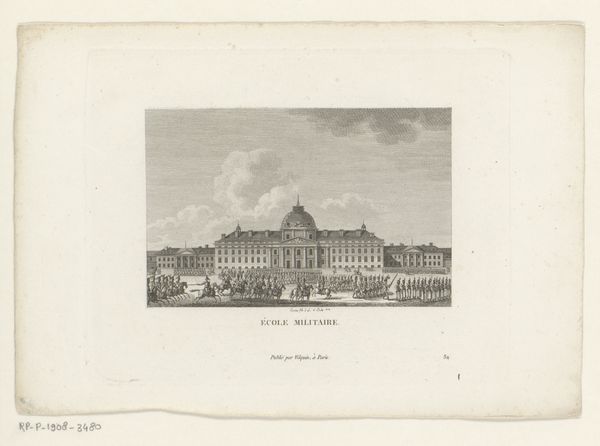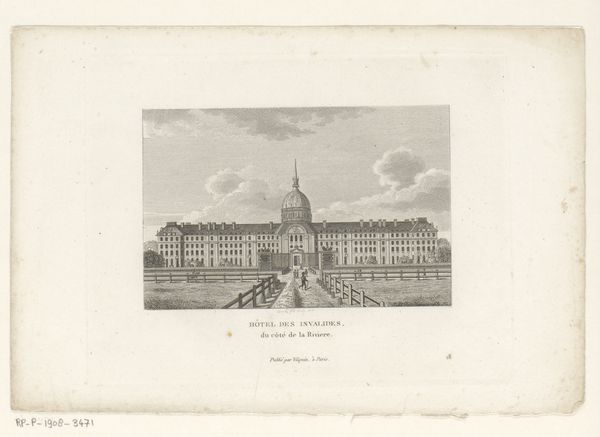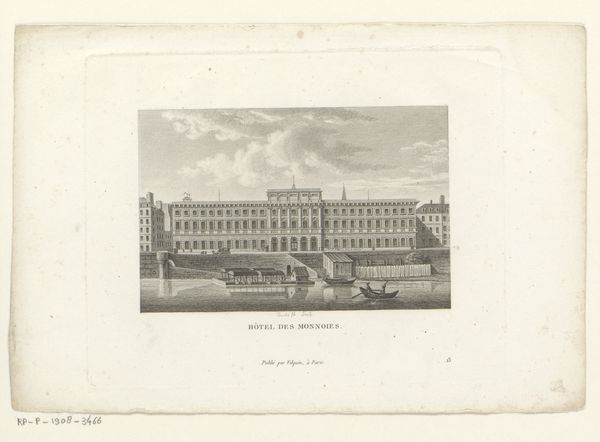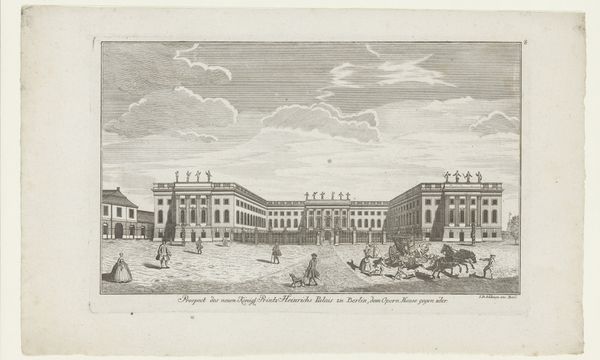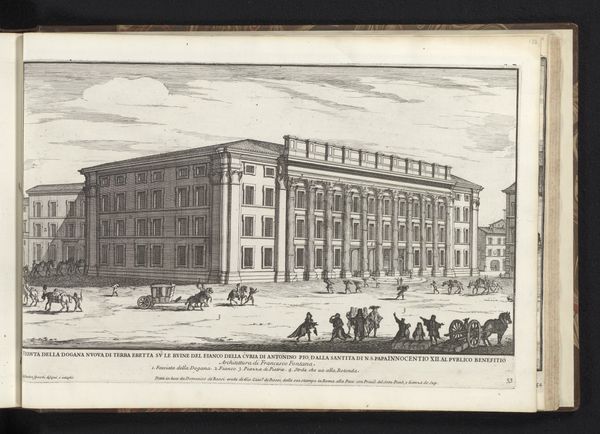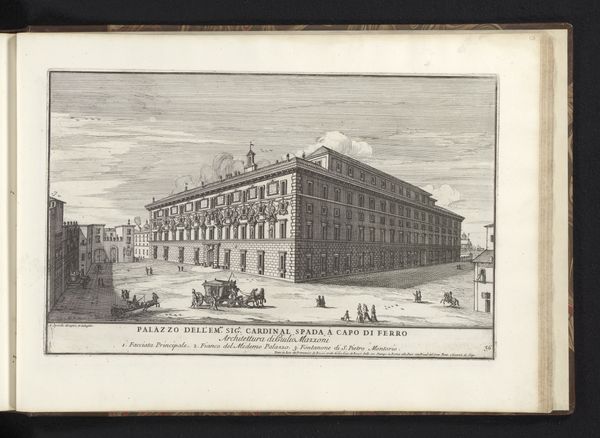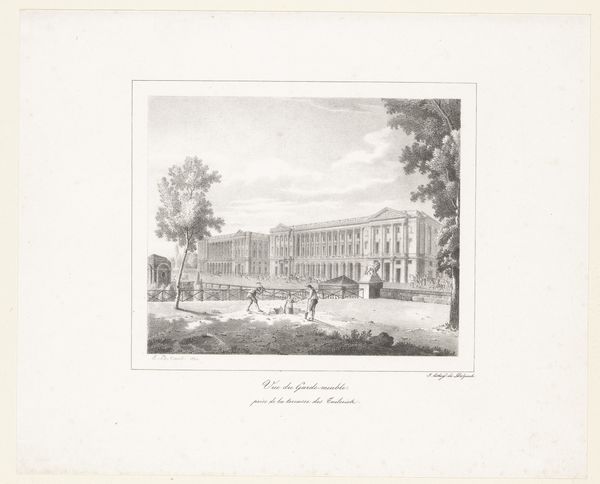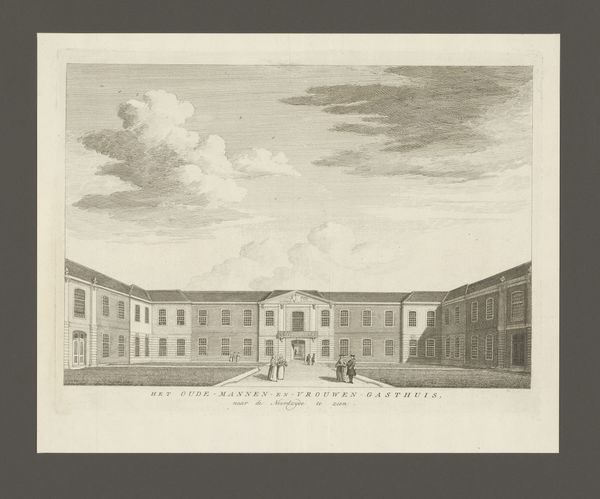
Gezicht op het Cour Carrée van het Palais du Louvre te Parijs 1818
0:00
0:00
print, engraving
#
neoclacissism
# print
#
old engraving style
#
landscape
#
personal sketchbook
#
cityscape
#
academic-art
#
engraving
Dimensions: height 124 mm, width 157 mm
Copyright: Rijks Museum: Open Domain
This print of the Cour Carrée of the Palais du Louvre in Paris was made by François Louis Couché, probably in the early 19th century. It is made using the technique of etching, a printmaking method that depends on the corrosive action of acid. The artist would have covered a metal plate with a waxy, acid-resistant substance, then scratched away lines to expose the metal beneath. Immersed in acid, these lines would bite into the plate, creating grooves that could then hold ink. This is very different to other methods of printmaking such as engraving, which requires immense force and skill in mark-making, as the acid does most of the work. Because of this, etching was a favorite medium for commercial printmakers as it allowed for the relatively quick reproduction of images. Etchings like this one were often bound into books or sold as individual prints, meeting the expanding market for images during the industrial revolution. So next time you see an etching, think about the etcher, their labor, and the growing consumer culture that supported their work.
Comments
No comments
Be the first to comment and join the conversation on the ultimate creative platform.
